Seafloor mapping XPRIZE final will be in the Mediterranean, off Greek coast
- Published
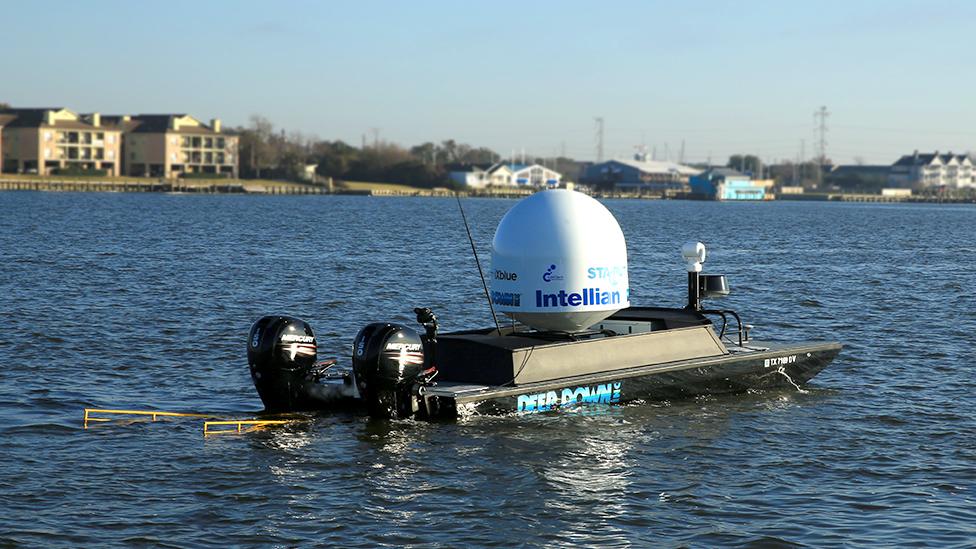
Team Texas A&M Ocean Engineering: Autonomy is paramount
The final of the ocean XPRIZE, which will see fleets of robots compete to map the largest area of seafloor inside 24 hours, will take place in deep waters off the coast of Greece.
Teams will be invited in turn to showcase their technologies, starting in early November.
They will have to chart at least 250 sq km at depths down to 4,000m, and image 10 items of interest.
The group that comes out on top will win $4m. Second place earns $1m.
The Shell Ocean Discovery XPRIZE, external was launched in 2015 to find systems and approaches that could finally map the world's ocean basins to an acceptable precision.
Currently, less than 15% of their bathymetry (depth) has been measured in a meaningfully accurate way. It is one of those truisms that the global surfaces of Mars and the Moon - because they have no water covering - are known in greater detail.

Some of the deepest waters in the Mediterranean are off the Greek coast
The XPRIZE Foundation is inviting eight teams to come to the port city of Kalamata. These international groups have devised all manner of autonomous airborne, surface, and sub-surface vehicles to take on the task of mapping seafloor topography.
They will each get about 10 days to set up their robotic systems in Kalamata, test them in situ, before then despatching them to the competition zone. The technologies have to be launched and recovered from the coast.
The nearest entry point to the mapping zone is 15 nautical miles (28km) away.

The eight Shell Ocean Discovery XPRIZE finalists:
ARGGONAUTS (Karlsruhe, Germany)
Blue Devil Ocean Engineering (Duke University, US)
CFIS (Arnex-sur-Nyon, Switzerland)
GEBCO-NF Alumni (International)
KUROSHIO (Yokosuka, Japan)
PISCES (Portugal)
Team Tao (Newcastle, UK)
Texas A&M Ocean Engineering (College Station, US)


Most of what we know now is the result of very low-resolution satellite mapping
Some of the deepest waters in the Mediterranean are found off the Greek mainland, including over the Hellenic Trench - a tectonic trough that reaches more than 6,000m below the sea surface.
The designated competition area is roughly 500 sq km. The teams will get just 24 hours to map at least half of it (equivalent to an area the size of Paris) at a resolution of 5m horizontally and 0.5m vertically.
It will be a tough challenge. The underwater systems will have to navigate a cold, dark and high-pressure environment that is more than twice as deep as the Grand Canyon in places.
"We chose the south coast of Greece because of its proximity to the deep sea," explained XPRIZE director Jyotika Virmani. "It has the land support that we need, and, of course, Greece has this wonderful history of going to sea and of invention, so it is perfect.
"Our partners, [the geo consulting company] Fugro, will already have made a very high-resolution baseline bathymetric map, and our judges will be comparing this with the maps produced by the teams."
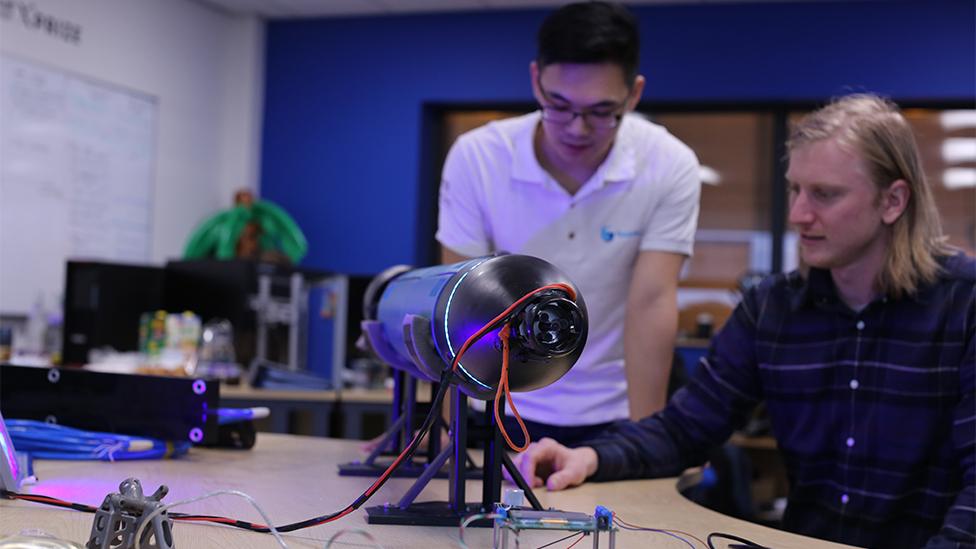
Team Tao is based in Newcastle in the UK
The first group to enter the competition area will be the GEBCO-Nippon Foundation Alumni Team.
Many of its team-members have gone through the Center for Coastal and Ocean Mapping at the University of New Hampshire, US.
Their solution to tackle the XPRIZE is to use a top-of-the-range autonomous underwater vehicle (AUV) from the Norwegian Kongsberg Maritime company. This will make the sea-floor map with an echosounder. But key to its operation is an uncrewed, British-built surface vessel known as SEA-KIT. This boat will release and recover the AUV, thus meeting the requirement of having no human intervention in the competition area.
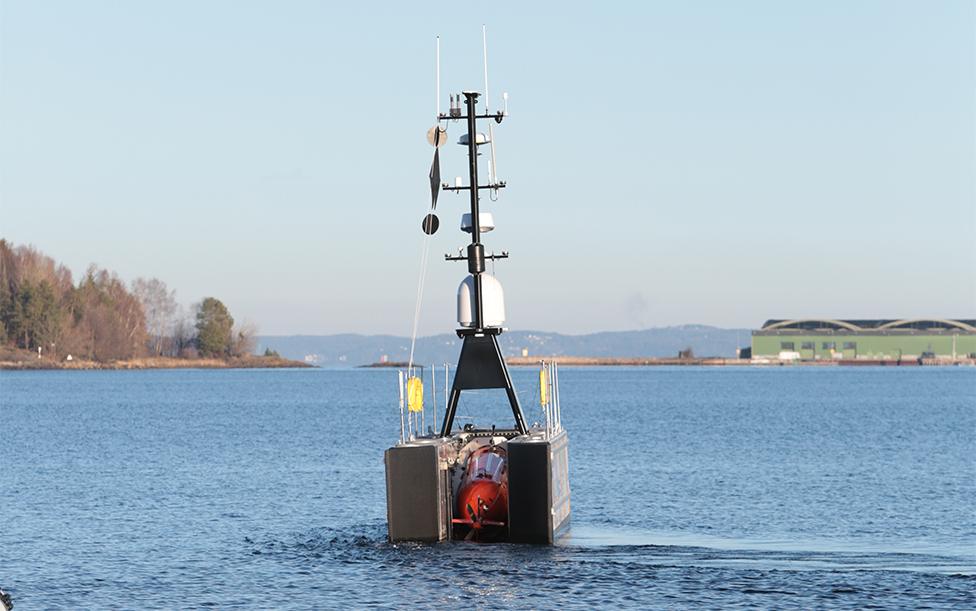
GEBCO-NF deploys and recovers the AUV using an uncrewed surface vessel called SEA-KIT
GEBCO-NF has just completed its final testing in Horten, Norway.
"The main goal of this testing was to get as much practice as possible in operating the system and at managing and processing the data. This we definitely achieved," said team lead Yulia Zarayskaya.
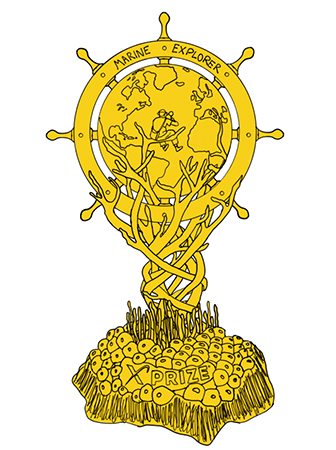
Hidden object: The design by UK-based artist Alexander Clarke
"We have come a long way in the last two years. We began from a point where there were six alumni (and advisers) who had some exciting ideas on how they thought mapping could be done, but had no idea about how to build a mapping system.
"We now are at the point where more then 70 people from a wide range of backgrounds have contributed their time and effort and put together the fully operational innovative ocean-mapping solution. The team is very excited to demonstrate this," she told BBC News.
One side aspect of the challenge is that the teams also have to image 10 features on the seafloor in the process of acquiring their map.
These could be things like animal life, a shipwreck, or a type of rock formation.
The organisers intend, however, to place a special object in the competition area, hoping that the teams can find it.
This object is a kind of trophy that has been designed by the UK-based artist Alexander Clarke.
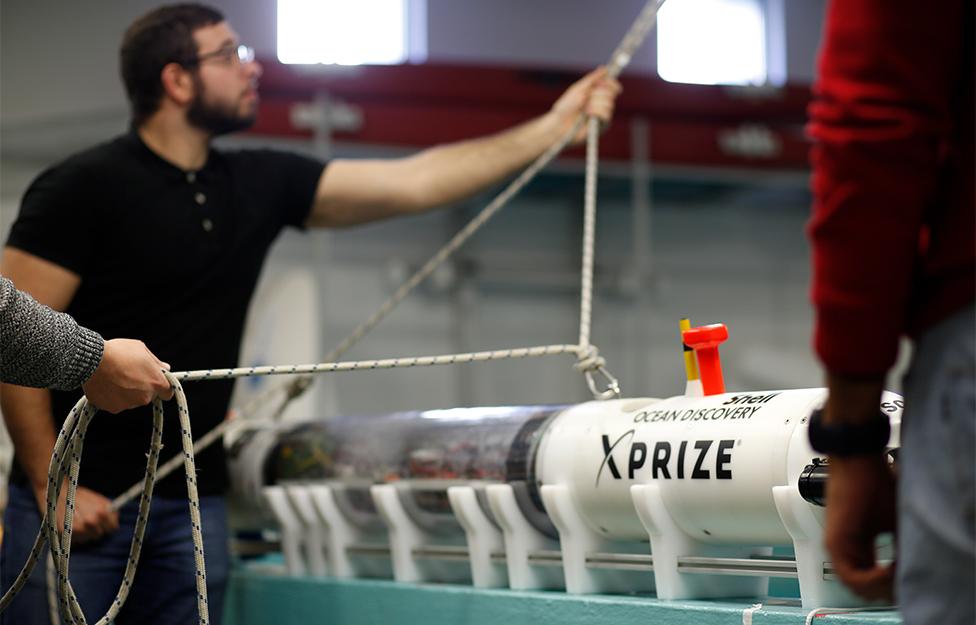
Team Pisces, like all the finalists, has been furiously testing its technology in recent weeks
All eight groups should have gone through the Kalamata exercise by the end of the year.
After the competition has ended, the high-resolution seafloor map will be given to the Greek research organisation NCSR-Demokritos, as it seeks to establish a neutrino telescope in the Mediterranean.
The international scientific community has given itself until 2030 to make the most detailed map of the global ocean floor ever assembled. It is expected that many of the technologies showcased in the XPRIZE will play their part in gathering the necessary data.
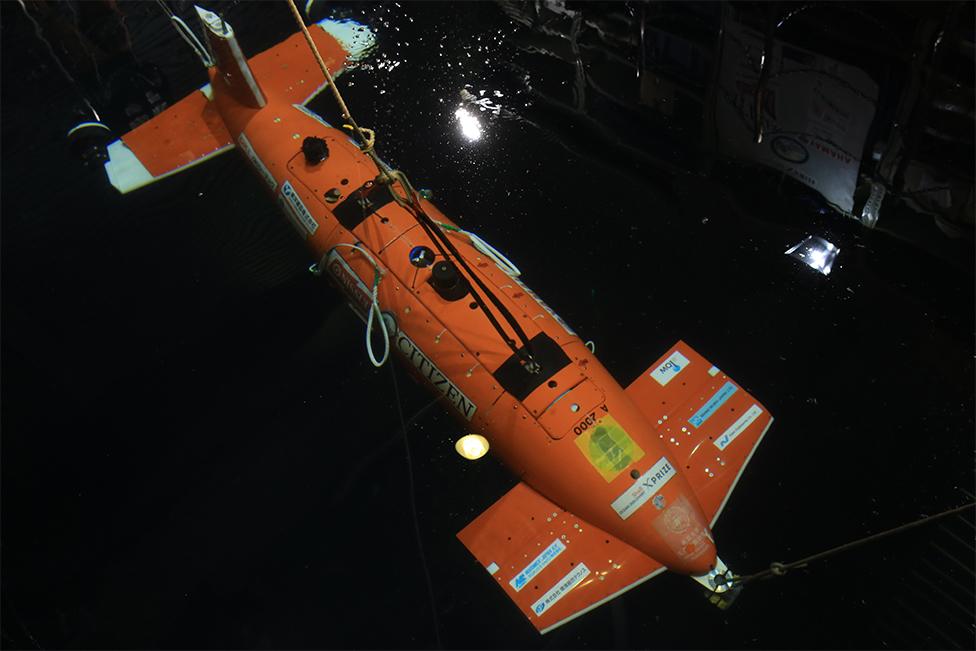
Team KUROSHIO is representing Japan
Jonathan.Amos-INTERNET@bbc.co.uk, external and follow me on Twitter: @BBCAmos, external